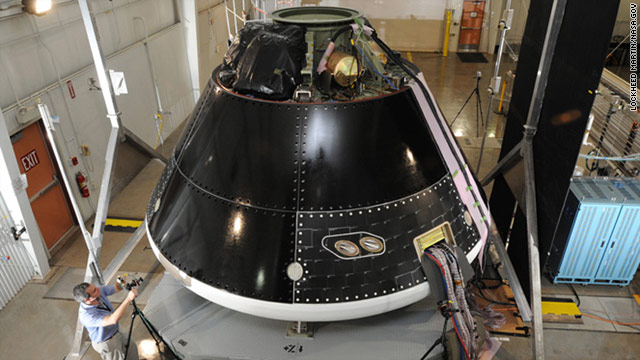The United States' long-term plans for Earth orbit launching hinges on privatization of launch systems. There is already a lot of that for satellite launches, and the promising successes of Virgin Galactic make it likely that those hopes will be at least somewhat realized.
But that's not really possible for deep-space exploration, which demands the resources and funds of an entire nation and doesn't have much near-term commercial viability. I was disappointed when Obama canceled the Orion Crew Exploration Vehicle, originally designed for this purpose. So it is heartening to see that the technology is being incorporated into Lockheed-Martin's Multi-Purpose Crew Vehicle.
It is, shall we say, not particularly sexy.

Gumdrops... in... spaaaaaaaaaace....
Now, I like shiny spaceships with wings as much as the next aero-dork. But there are a lot of reasons for returning to an Apollo-like system.
First of all, deep-space exploration doesn't need wings. It needs durability. And building a bullet-shaped vehicle removes a lot of extraneous surface area. Also, if you're going to be in space for months at a time, you need your systems to function well, and that means keeping it simple... especially when it comes to re-entry into the Earth's atmosphere. There is literally no easier way to de-orbit than parachuting into the ocean.
In fact, if it didn't need to de-orbit, the thing could be even more ungainly, as there would be no need for streamlining at all. So, flashy and beautiful? No. Exciting? Yes--and for all the right reasons.
I remember watching the Space Shuttle's first launch with my parents. With a MPCV launch date of 2016 or so, it looks like I'll be able to see the space program's next generation blast off too.


1 comment:
It probably goes without saying, but I am totally on board with your excitement (pun sort of intended). However, I will say, I'm a little mystified about how the President's recent scrubbing of the Constellation program is having any actual affect on NASA's role, other than to have slowed things down. NASA's site even claims that their new launch vehicle design will be "...leveraging investments in legacy space launch systems to the greatest extent practicable." Doesn't that just mean an "evolution" of everything Constellation already provided? At the end of the day, they still need A) a heavy-lift launch vehicle, and B) a crew module. Crew module? Check. Now a brand new rocket design? Why not just move forward with the Ares I and Ares V?
But anyway, what do I know? Let's just get to it America. The void awaits!
Post a Comment